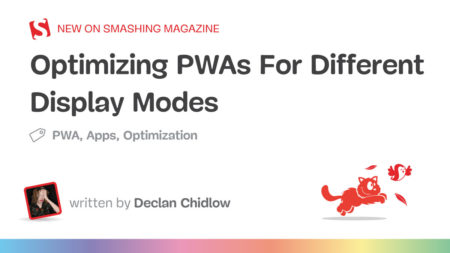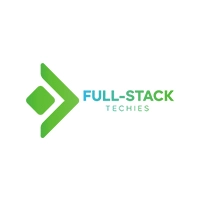Microsoft has officially announced the general availability of Windows Backup for Organizations with the rollout of Windows 11 KB5064080 (OS…
Microsoft has rolled out the Windows 11 KB5064080 (OS Build 22621.5840) Preview update. This is a non-security optional release that…
Microsoft has released the Windows 10 KB5063842 (OS Build 19045.6282) Preview update. As a non-security optional update, it focuses on…
After Microsoft released the August 12 updates for version 24H2 (KB5063878), Windows 10 (KB5063709), schools spotted a bug that triggers…
Progressive web apps (PWA) are a fantastic way to turn web applications into native-like, standalone experiences. They bridge the gap…
10 Reasons To Build a Full-stack Python Development Company Page Updated On GET A FREE QUOTE Node.js Web App Development…
Android will soon require app developers to go through an identity verification process before their apps can be installed on…
CVE ID : CVE-2025-55575
Published : Aug. 25, 2025, 4:15 p.m. | 1 day, 10 hours ago
Description : SQL Injection vulnerability in SMM Panel 3.1 allowing remote attackers to gain sensitive information via a crafted HTTP request with action=service_detail.
Severity: 9.8 | CRITICAL
Visit the link for more details, such as CVSS details, affected products, timeline, and more…
CVE ID : CVE-2025-9443
Published : Aug. 26, 2025, 3:15 a.m. | 23 hours, 39 minutes ago
Description : A flaw has been found in Tenda CH22 1.0.0.1. This vulnerability affects the function formeditUserName of the file /goform/editUserName. Executing manipulation of the argument new_account can lead to buffer overflow. It is possible to launch the attack remotely. The exploit has been published and may be used.
Severity: 9.0 | HIGH
Visit the link for more details, such as CVSS details, affected products, timeline, and more…
CVE ID : CVE-2025-5931
Published : Aug. 26, 2025, 5:15 a.m. | 21 hours, 39 minutes ago
Description : The Dokan Pro plugin for WordPress is vulnerable to privilege escalation via account takeover in all versions up to, and including, 4.0.5. This is due to the plugin not properly validating a user’s identity prior to updating their password during a staff password reset. This makes it possible for authenticated attackers, with vendor-level access and above, to elevate their privilege to the level of a staff member and then change arbitrary user passwords, including those of administrators in order to gain access to their accounts. By default, the plugin allows customers to become vendors.
Severity: 8.8 | HIGH
Visit the link for more details, such as CVSS details, affected products, timeline, and more…
CVE ID : CVE-2025-41702
Published : Aug. 26, 2025, 6:15 a.m. | 20 hours, 39 minutes ago
Description : The JWT secret key is embedded in the egOS WebGUI backend and is readable to the default user. An unauthenticated remote attacker can generate valid HS256 tokens and bypass authentication/authorization due to the use of hard-coded cryptographic key.
Severity: 9.8 | CRITICAL
Visit the link for more details, such as CVSS details, affected products, timeline, and more…
CVE ID : CVE-2025-53418
Published : Aug. 26, 2025, 7:15 a.m. | 19 hours, 39 minutes ago
Description : Delta Electronics COMMGR has Stack-based Buffer Overflow vulnerability.
Severity: 8.6 | HIGH
Visit the link for more details, such as CVSS details, affected products, timeline, and more…
CVE ID : CVE-2025-7775
Published : Aug. 26, 2025, 1:15 p.m. | 13 hours, 39 minutes ago
Description : Memory overflow vulnerability leading to Remote Code Execution and/or Denial of Service in NetScaler ADC and NetScaler Gateway when NetScaler is configured as Gateway (VPN virtual server, ICA Proxy, CVPN, RDP Proxy) or AAA virtual server
(OR)
NetScaler ADC and NetScaler Gateway 13.1, 14.1, 13.1-FIPS and NDcPP: LB virtual servers of type (HTTP, SSL or HTTP_QUIC) bound with IPv6 services or servicegroups bound with IPv6 servers
(OR)
NetScaler ADC and NetScaler Gateway 13.1, 14.1, 13.1-FIPS and NDcPP: LB virtual servers of type (HTTP, SSL or HTTP_QUIC) bound with DBS IPv6 services or servicegroups bound with IPv6 DBS servers
(OR)
CR virtual server with type HDX
Severity: 9.2 | CRITICAL
Visit the link for more details, such as CVSS details, affected products, timeline, and more…
CVE ID : CVE-2025-7776
Published : Aug. 26, 2025, 1:15 p.m. | 13 hours, 39 minutes ago
Description : Memory overflow vulnerability leading to unpredictable or erroneous behavior and Denial of Service in NetScaler ADC and NetScaler Gateway when NetScaler is configured as a Gateway (VPN virtual server, ICA Proxy, CVPN, RDP Proxy) with PCoIP Profile bounded to it
Severity: 8.8 | HIGH
Visit the link for more details, such as CVSS details, affected products, timeline, and more…
CVE ID : CVE-2025-8424
Published : Aug. 26, 2025, 2:15 p.m. | 12 hours, 39 minutes ago
Description : Improper access control on the NetScaler Management Interface in NetScaler ADC and NetScaler Gateway when an attacker can get access to the appliance NSIP, Cluster Management IP or local GSLB Site IP or SNIP with Management Access
Severity: 8.7 | HIGH
Visit the link for more details, such as CVSS details, affected products, timeline, and more…
CVE ID : CVE-2025-9481
Published : Aug. 26, 2025, 2:15 p.m. | 12 hours, 39 minutes ago
Description : A security vulnerability has been detected in Linksys RE6250, RE6300, RE6350, RE6500, RE7000 and RE9000 1.0.013.001/1.0.04.001/1.0.04.002/1.1.05.003/1.2.07.001. This affects the function setIpv6 of the file /goform/setIpv6. The manipulation of the argument tunrd_Prefix leads to stack-based buffer overflow. Remote exploitation of the attack is possible. The exploit has been disclosed publicly and may be used. The vendor was contacted early about this disclosure but did not respond in any way.
Severity: 9.0 | HIGH
Visit the link for more details, such as CVSS details, affected products, timeline, and more…
CVE ID : CVE-2025-9482
Published : Aug. 26, 2025, 2:15 p.m. | 12 hours, 39 minutes ago
Description : A vulnerability was detected in Linksys RE6250, RE6300, RE6350, RE6500, RE7000 and RE9000 1.0.013.001/1.0.04.001/1.0.04.002/1.1.05.003/1.2.07.001. This impacts the function portRangeForwardAdd of the file /goform/portRangeForwardAdd. The manipulation of the argument ruleName/schedule/inboundFilter/TCPPorts/UDPPorts results in stack-based buffer overflow. The attack can be executed remotely. The exploit is now public and may be used. The vendor was contacted early about this disclosure but did not respond in any way.
Severity: 9.0 | HIGH
Visit the link for more details, such as CVSS details, affected products, timeline, and more…
CVE ID : CVE-2025-9483
Published : Aug. 26, 2025, 2:15 p.m. | 12 hours, 39 minutes ago
Description : A flaw has been found in Linksys RE6250, RE6300, RE6350, RE6500, RE7000 and RE9000 1.0.013.001/1.0.04.001/1.0.04.002/1.1.05.003/1.2.07.001. Affected is the function singlePortForwardAdd of the file /goform/singlePortForwardAdd. This manipulation of the argument ruleName/schedule/inboundFilter causes stack-based buffer overflow. The attack is possible to be carried out remotely. The exploit has been published and may be used. The vendor was contacted early about this disclosure but did not respond in any way.
Severity: 9.0 | HIGH
Visit the link for more details, such as CVSS details, affected products, timeline, and more…
CVE ID : CVE-2025-6366
Published : Aug. 26, 2025, 3:15 p.m. | 11 hours, 39 minutes ago
Description : The Event List plugin for WordPress is vulnerable to privilege escalation in all versions up to, and including, 2.0.4. This is due to the plugin not properly validating a user’s capabilities prior to updating their profile in the el_update_profile() function. This makes it possible for authenticated attackers, with Subscriber-level access and above, to change their capabilities to those of an administrator.
Severity: 8.8 | HIGH
Visit the link for more details, such as CVSS details, affected products, timeline, and more…
CVE ID : CVE-2025-57810
Published : Aug. 26, 2025, 4:15 p.m. | 10 hours, 39 minutes ago
Description : jsPDF is a library to generate PDFs in JavaScript. Prior to 3.0.2, user control of the first argument of the addImage method results in CPU utilization and denial of service. If given the possibility to pass unsanitized image data or URLs to the addImage method, a user can provide a harmful PNG file that results in high CPU utilization and denial of service. The vulnerability was fixed in jsPDF 3.0.2.
Severity: 8.7 | HIGH
Visit the link for more details, such as CVSS details, affected products, timeline, and more…

